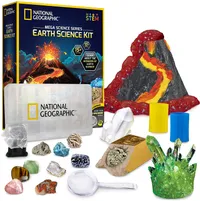Summer solstice 2021 on Father's Day, the longest of the year, marks Earth's changing seasons
Father's Day is the longest day of the year!

The official start of summer kicks off in the Northern Hemisphere today (June 20), marking the longest day of the year — which also happens to coincide with Father's Day.
The June solstice will occur at 11:32 p.m. EDT (0332 June 21 GMT), when the sun reaches the point at which it is farthest north of the celestial equator. Reaching its highest and northernmost point in the sky, the sun must travel its longest path, meaning it will take longer to rise and to set, which is why today marks the longest day — or longest period of sunlight hours — and shortest night.
In addition, the summer solstice occurs at the moment the northern half of Earth is tilted toward the sun, meaning the Northern Hemisphere receives sunlight at the most direct angle of the year. At this time, the sun will appear directly overhead for a point on the Tropic of Cancer (latitude 23.5 degrees north) in the central Pacific Ocean, 817 miles (1,314 kilometers) east-northeast from Honolulu. Conversely, the June solstice marks the beginning of winter in the Southern Hemisphere, when the sun is at its lowest point in the sky and the southern half of Earth is tilted away from the sun.
Related: What Happens at the Summer Solstice?
National Geographic's Earth Science Kit: $20.99 now $29.99 at Amazon,
Save $9 for Prime Day: Explore over 15 experiments and activities in this Earth science kit. With these activities, you can do everything from erupt a volcano to grow crystals and go on geologic digs.
The timing of the June solstice is based on when the sun reaches its northernmost point from the celestial equator, generally between June 20-22. And this year, the solstice also happens to fall on Father’s Day! Here's what skywatchers can expect to see as dads around the world celebrate on Sunday, as well as during the week following the summer solstice.
Beginning Sunday morning (June 20), Mercury appeared above the horizon about 30 minutes before sunrise and may be visible at dawn. Solstice will occur at 11:32 p.m. EDT (0332 June 21 GMT) Sunday night. However, during the day, viewers in the Northern Hemisphere may experience more than 14 hours of sunlight. You can use The Farmer's Almanac Sunrise and Sunset Calculator to determine how many hours of sunlight you’ll get in your location during the solstice.
Later in the week, viewers will be treated to other skywatching events, starting Monday night (June 21), when Venus and the bright star Pollux will appear closest to each other (a little over 5 degrees apart).
Breaking space news, the latest updates on rocket launches, skywatching events and more!
On Tuesday (June 22), the bright star Antares will appear about 5 degrees below the waxing gibbous moon — only shortly before the moon reaches perigee, or its closest approach to Earth in its orbit, on Wednesday (June 23). Then, on Thursday (June 24), the next full moon, also called the Strawberry Moon, will occur at 2:40 p.m. EDT (1840 GMT) and appear full to stargazers through early Saturday morning, according to NASA.
While the June solstice marks the official start of summer and the longest day of the year, it also represents a turning point of the year: As the sun begins its annual southward migration, the days will start getting shorter once again.
Follow Samantha Mathewson @Sam_Ashley13. Follow us on Twitter @Spacedotcom and on Facebook.

Samantha Mathewson joined Space.com as an intern in the summer of 2016. She received a B.A. in Journalism and Environmental Science at the University of New Haven, in Connecticut. Previously, her work has been published in Nature World News. When not writing or reading about science, Samantha enjoys traveling to new places and taking photos! You can follow her on Twitter @Sam_Ashley13.

